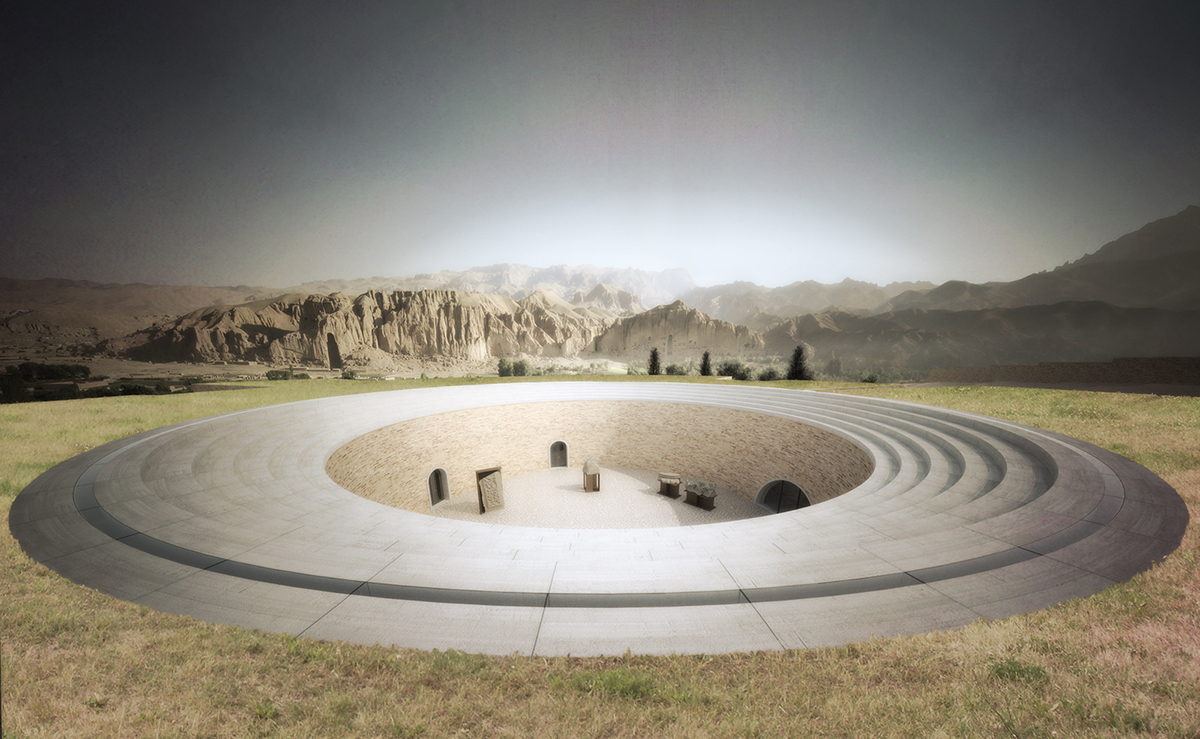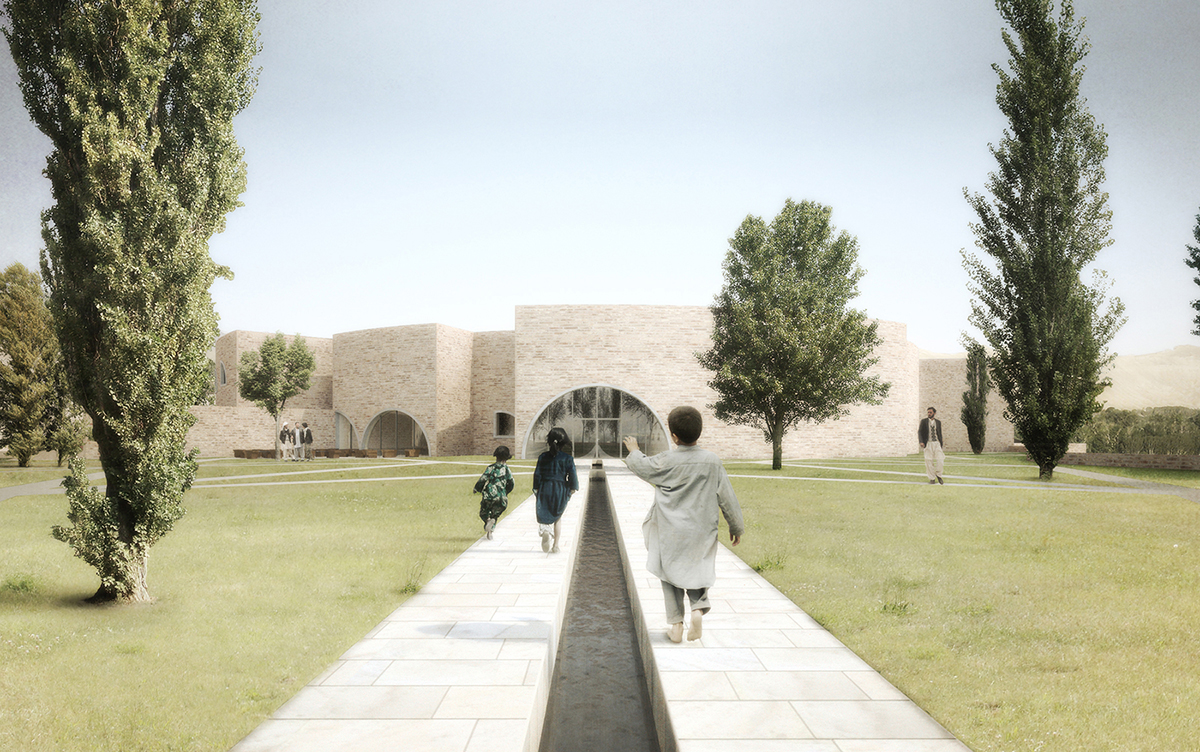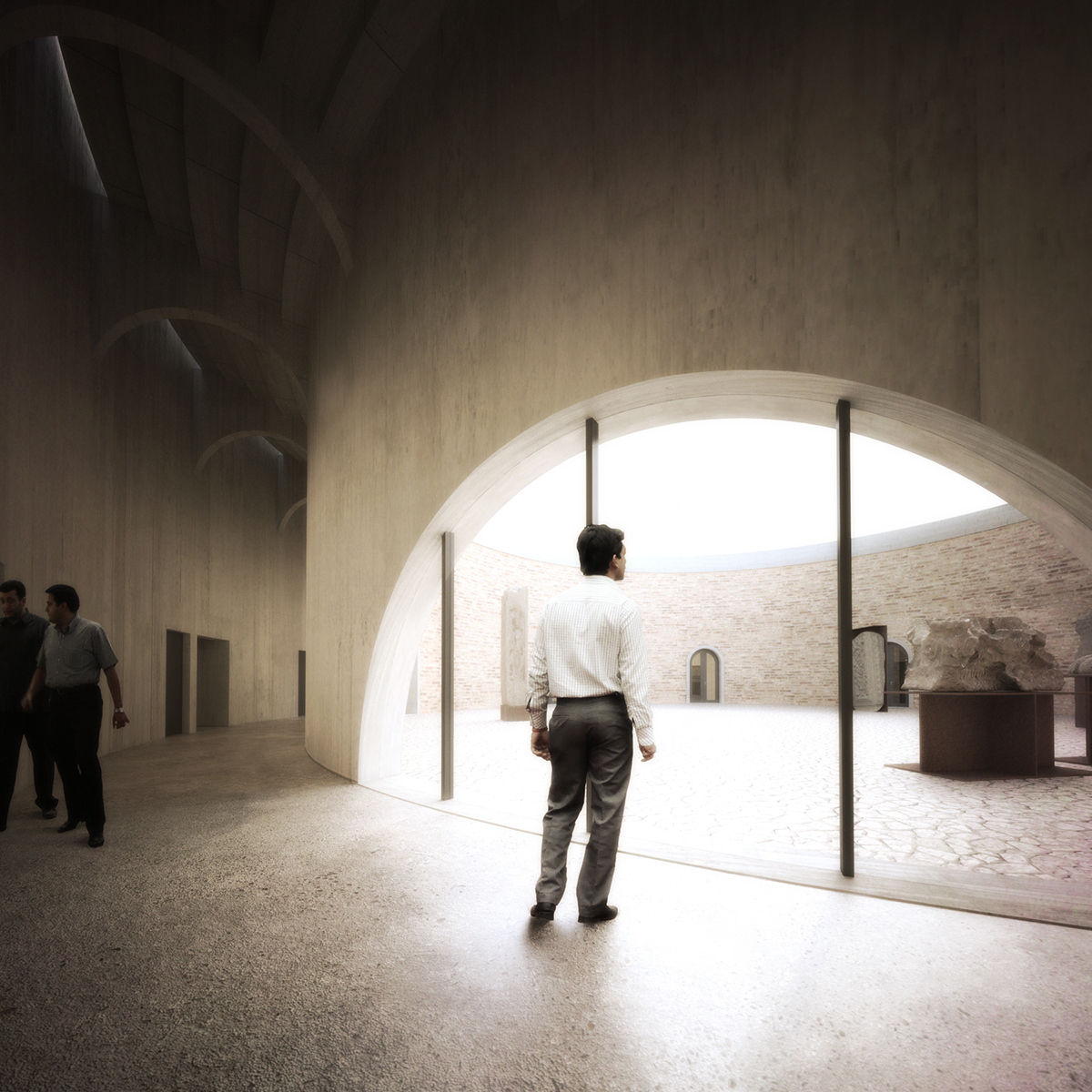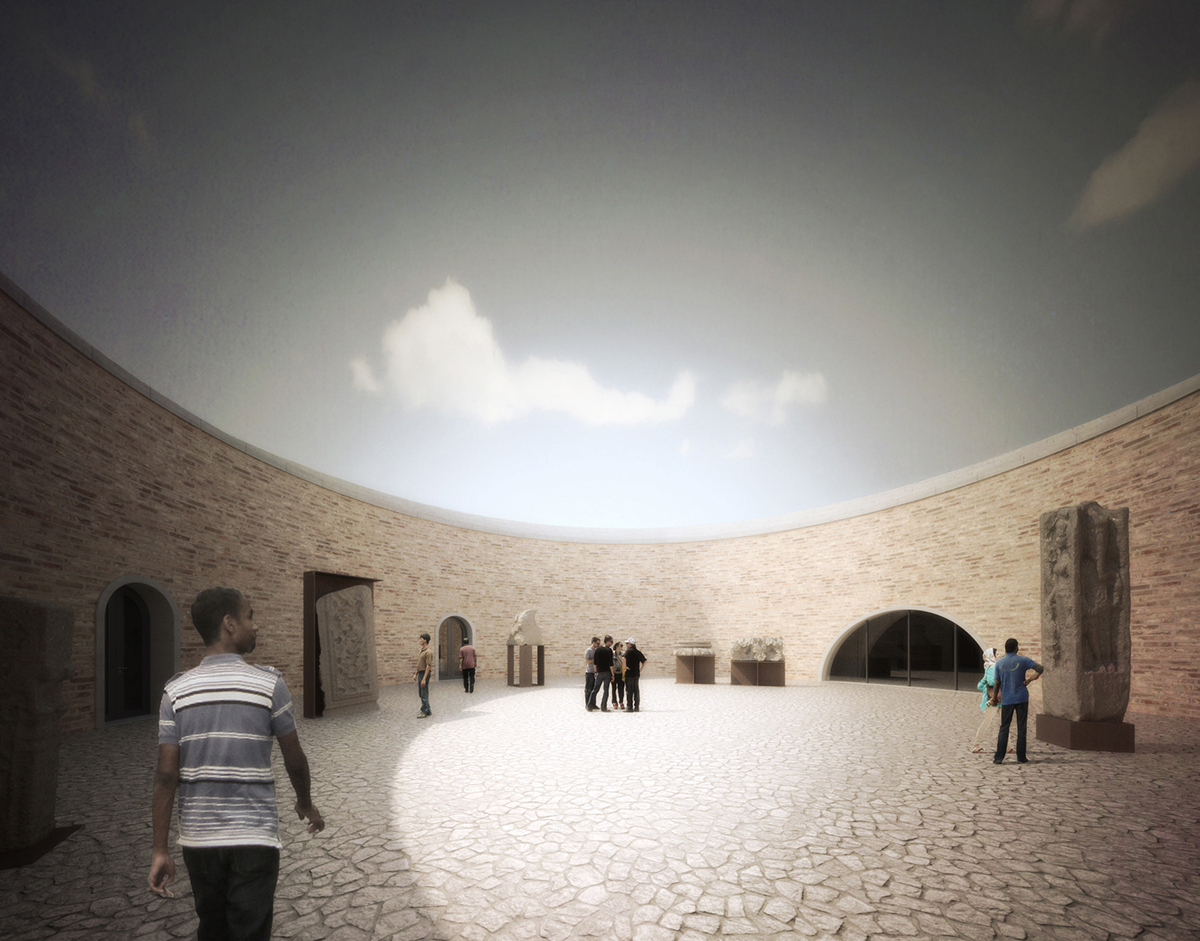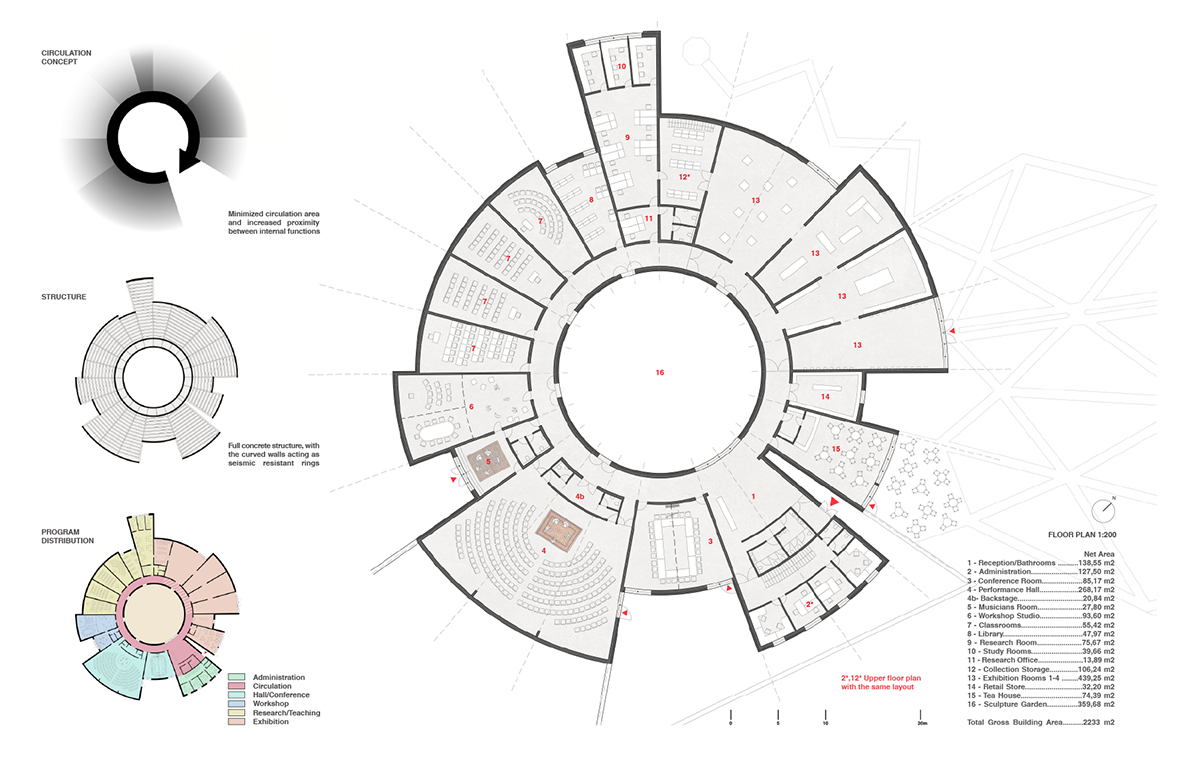1120-JJS-BIM.AF-2015
Clients: UNESCO, Ministry of Information and Culture of Afghanistan
Status: Competition (2015)
Location: Bamyan, Afghanistan
Climate: Desert / arid, Hot
Material: Brick
Environment: Desert
Visualizer: Studio
Scale: Medium
Types: Cultural, Cultural center
Considering all the briefing´s budget and program restraints it emerged the idea that the new cultural center would not be an imposing monument, but a silent one. In addition, the building should be protected against the strong mountain winds and effectively deal with the local extreme temperature variations. Following this strategy, the building stands in a transition area between the plot´s two ground levels, with the building’s roof extending the higher ground and developing an apparently spontaneous and offset geometry. More than designing a single building, the adopted strategy increases the available outdoor area, while at the same time recreating the landscape as a determinant element for the spatial structure.
The result is one of unobstructed views of the Bamiyan valley from almost every spot on site and a strong feeling of immersion into the landscape. Recognizing the importance of the courtyard typology in local vernacular culture and architecture, all programmatic spaces are arranged around a central atrium, with a ring of fluid circulation connecting each internal area. This central courtyard provides generosity of space and a means of orientation within the building, and is furthermore a versatile space well suited to hosting art, archeology, installations and events. The program implementation strategy around the ring minimizes significantly the amount of area dedicated to circulation, bringing all functions closer to each other and developing a compact building. It also creates the potential for frequent informal meetings and casual encounters.
Gardens/sustainable aspects
The landscaping strategy for the cultural center´s gardens is based on a matrix of pedestrian paths that colonize the site. This matrix has a strong Islamic influence, based on a geometric flower which has its origin in the building center and irradiates outwards. In the tradition of the Islamic garden, water plays a determining role. Water reservoirs were placed on the lower and higher limits of the site. Water channels connect the two levels to allow irrigation by gravity, and in the process intercept the cultural center, where floor vents can be used to cool the building in the summer. The lower gardens are provided with an open-air water axis that pays tribute to the gardens of Bagh-e-Babur. Strategic scenic overlooks where placed in the edges, contemplating the valley and the cliffs.
Constructive system
The economic, tectonic and plastic qualities of concrete where fully explored. Curved concrete boundary walls improve the ability of the building to withstand seismic events and reduce the wall thickness, thus coping with the briefing´s thorough areas. Ribbed slabs supported on walls were used do to its lightweight and long spans. All building façades and external walls are finished with a layer of local loam bricks, honoring the local building tradition. The building´s bricks are fire baked to increase durability and the external wall bricks are sun baked to reduce costs. Thermal insulation was considered throughout the building, with a minimum of 10cm thick panels on the façades and floors and 20cm thick panels on the roof. No roof apertures were considered on any of the buildings rooms to avoid thermal loses. Roof openings were considered on the circulation ring, which acts as an extensive temperature regulator.

